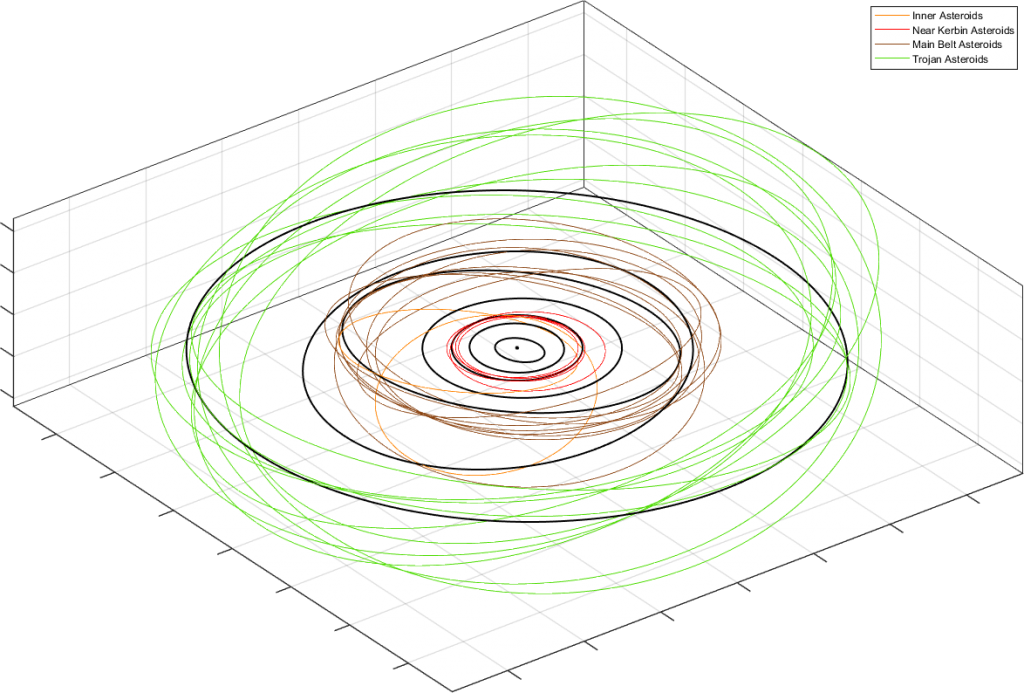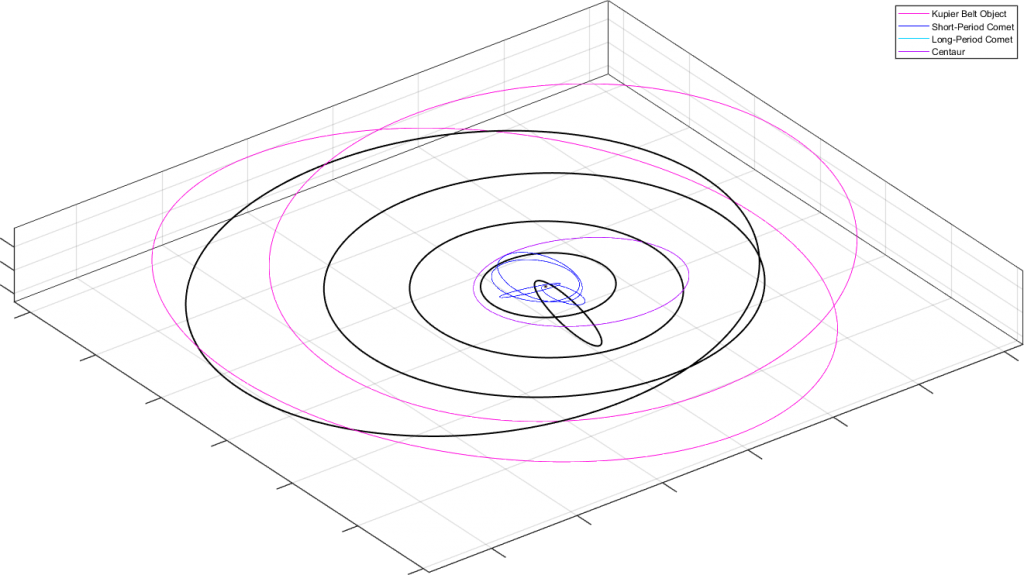|
Progeny Mk7-B Again Sees Partial Mission Success
Yesterday’s second mission launched after a one day delay due to weather conditions. Since we had greatly dampened the guidance fins in order to prevent violent roll-shake during early ascent we had to tighten launch constraints to ensure the rocket could steer properly. Analysis of the first mission led us to believe that a smoother ascent would allow staging sooner after booster engine cutoff so the Mk7-B could keep up its velocity and attain a higher apokee for us to do more work testing the reaction wheels while coasting through space.
During the early ascent this time although roll-shake was indeed lessened the rocket appeared to roll around and have trouble maintaining pitch and heading as if it was unable to properly use one or more of its fins. Although the rocket was not on the proper pitch profile at BECO its velocity, AoA and dynamic pressure were still within limits considered to be safe for second stage flight and the command was sent 3 seconds later by FD Lanalye herself while the rocket was at 19km. However only 3 seconds after that the rocket had lost control and gone into an end-over-end tumble. It flipped upside down, almost all the way around but then airflow forced the large nose back to the rear and it flipped back around right-side up. By then speed and dynamic pressure as well as atmospheric pressure had lowered further to allow the thrust vector control system of the Ospray to hold attitude and regain the pitch profile.
The loss of control during ascent led to an early main engine cutoff similar to last flight, with an additional tumble after MECO further lowering apokee before reaching space. Without being able to get a significant gain in apokee from an engine restart, more attention was instead paid to the reaction wheel system this time around, asking it to point more than just from prograde to retrograde. So while we were able to recover the entire upper stage this time, the mission must still be marked as a failure overall since MES-2 was a primary goal. Now the team will get to work preparing for the next two launches in October.
One or both of those October launches may actually re-fly a booster that was previously used. We’ve gotten confirmation from Periapsis Co. that the refurbished static-fired SRB had a successful burn, so the 3rd Mk7-B could re-fly a static-tested booster. If that goes well, the 4th Mk7-B could re-fly the booster that was recovered earlier this month from the first flight. We also have two fresh boosters set aside to use if needed.
Ascension Prepares for Second Orbital Mission
The power unit for the Kerbin II satellite, the radioisotope thermoelectric generator, completed assembly earlier this month. This means the decay of Kuudite has already begun and the 0.15EC/s of power it outputs will slowly start to decline over time. The RTG was completed on the original schedule to launch this month, and the mission has since been delayed to September. With a 9.2yr half life however this will not present a problem, as when the mission launches the RTG will still be outputting roughly 0.149EC/s. With the Progenitor launch campaign concluded for now, full attention is being brought to the Ascension team working through the final steps of preparing the Mk2 for flight.
Let’s also not forget about the upcoming Mk3 for next year. We’ve released some renders of what it is currently planned to look like. The last aspect that needs final approval are the changes made to the Viklun upper stage, which will be tested on the Mk2 flight next month. If the stage is able to hold attitude properly for a good ascent into orbit then we will have the Mk3 blueprint published in October.
KerBalloon Carry Out High/Low Releases
Crews for the KerBalloon program both had successful missions over the past two weeks. The high-altitude crew took weather measurements in the highlands between Sheltered Rock and Ockr, which is a region that will have a great effect on conditions further to the south where the first surface colony is currently being planned for construction. The low-altitude crew was tasked by field researchers in charge of monitoring pollen levels around KSC to release a balloon with instruments similar to the Atmospheric Fluid Spectro-Variometer over the grasslands just west of the Cape. The aim was to see how well the data could augment the quarterly Civvie flights and already they have a contract for two more releases for the same purpose.
Looking Ahead to Extremis I in 2021
Of all the currently active programs Extremis has certainly been the most obscure, but this is to be expected when the majority of the technology to be used for its missions is still under heavy ongoing development. About the only things we can say for sure are that 1) it will represent all missions sent beyond the orbit of Kerbin and 2) the first interplanetary attempt will be made in late 2021 to send a probe out to fly by Eve, Jool and Plock. This will be a “flagship” mission and carry the designation Extremis I. Missions next year that could attempt to reach Mun and/or Minmus will carry their own planet-specific designations.
The fly by was calculated back in early 2018 and so far no detailed mission planning has been carried out since, again, we are still rushing to develop the technology needed for executing such a complex mission. We’re getting close though, as well as approaching the threshold of being able to fly a rocket powerful enough to get the job done (at least the Ascension Mk3). Without knowing yet our margin for payload, the probe itself lacks a final design as well. Given the very low amount of Δv needed (~2km/s once in orbit) and a travel time of just over 2 years to reach Plock, even if we can only send the smallest of probes the effort would be worth it.
One year remains before we miss our departure window and the Extremis team is now really starting to feel the pressure. Expect that you will be hearing a lot more from them before long.
ATN Database
The latest update for the Asteroid Tracking Network database is available here, containing 5,607 asteroids and 2 updated with new observation data. Here are the 33 asteroids that were discovered this past week.
 |
 |
From the Desk of Drew Kerman
Out of Character Behind the Scenes stuffWritten on 8/28/20
I actually finished all the above yesterday, so starting today with wrapping this up then trying to slam my way up to the Mk2 launch so I can attempt at least a few days lead into the orbital mission. I expect a high workload here so gotta get ahead quick. As usual, spending a lot of time with other games. I generally work on KSA stuff until the early evening when my friends free up from their own work and we get together to play GTA V or World of Warships or Rocket League… last week I actually had a week of lead time but that was all (predictably) lost when MSFS2020 came out and I started spending time flying again (yes, this is the real reason behind the demise of the Genesis program…). You can check out tons of pretty pictures on my personal flickr.
Okay so I failed last Friday to go back and fill in my Desk Notes for a previous Ops Summary but I will do this one at least.
Shotcut
Since starting KSA (even the original run from 2014) I’ve been using a commercial version of Vegas Pro for my video editing, since I got a free copy for doing a review online. But lately it’s been having trouble importing certain video formats, and then totally crapped out when I had to switch from Fraps to Bandicam to record clips from KSP. Luckily I happened to be working through my Maximum PC back issues and in their article on freeware from several months ago I got the recommendation for Shotcut. It’s a basic editor but it does what I need and my experience with Vegas translates well. It also has built-in filters that let me adjust exposure and saturation so I can make the videos appear closer to what images look like without needing to add post-processing effects to the gameplay itself, which is another thing I lost control of in the Unity upgrade that brought KSP to DX11.
More noteworthy though is that this recent video of the Mk7-B was actually filmed in KSP 1.9.1 not 1.5.1 which I currently have to use for all my images since mods like EVE and Kopernicus and Kerbal Konstructs are not quite yet ready for use in 1.9.1+ (all but KK are getting really close tho). What’s great about filming in 1.9.1 is that I don’t get stutters that I need to clean up during post production, which is very time consuming.
Second Mk7-B mission
As usual I flew a straight-up launch just to test code execution, forgot to take out FAR as well to reduce the flight dynamics accuracy and make it more like a “sim run” but no biggie – straight up is straight up. Despite actually beefing up the engine shroud fairings by increasing the density slider in the VAB I still had one half slide off. However that must have been due to going straight up because in the actual flight this time the engine shroud remained intact as intended.
The rocket is landing engine-first and hits with a speed that is tolerable by the engine however it’s not a speed tolerable by parts above the engine, which shouldn’t matter as much because the engine is supposed to soak up the impact and thus the actual force imparted on the parts higher up should be less enough to survive. But they don’t. So I just make sure to enable the cheats preventing crash damage and breakable joints. This worked fine in the test flight however during the actual mission for some reason the rocket still ended up getting destroyed! Sonofabitch. So I had to make up an excuse for the logging data to cut out. Same thing happened last mission but at least in that case I planned for the rocket telemetry to fail during recovery so it crashing and losing the data wasn’t as big a deal.
I also did an oopsie on the steering – I set all the fins to no pitch, just a bit of yaw and roll then disabled symmetry and went to adjust the horizontal fins to add pitch authority… and I forgot to adjust them both I only did one! But hey, it added a little bit of trouble to the mission and to be honest it was kinda cool seeing the rocket work to try to make the best of it – it seems like it finally decided to roll a bit sideways and use the yaw ability to force the nose over. Kudos to the kOS developers for making a great guidance algorithm that didn’t just completely shit the bed. Also now I get to work up a creative reason for why the fin failed.







